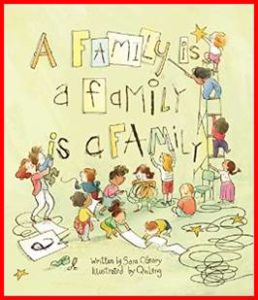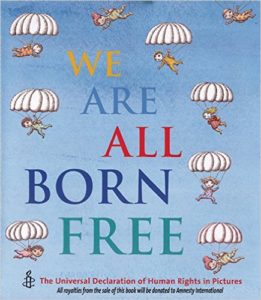 Diane Alber wrote and illustrated Snippets: A Story about Paper Shapes. It is a clever, charming book which at first glance appears to be about having fun with arts and crafts materials. If one pauses to read the Dedication, however, the reader learns that the book has a far more important purpose: “You can change the world one snippet of kindness at a time.” Spreading kindness is a worthy purpose indeed and children benefit from understanding how they can bring kindness to life in their daily lives.
Diane Alber wrote and illustrated Snippets: A Story about Paper Shapes. It is a clever, charming book which at first glance appears to be about having fun with arts and crafts materials. If one pauses to read the Dedication, however, the reader learns that the book has a far more important purpose: “You can change the world one snippet of kindness at a time.” Spreading kindness is a worthy purpose indeed and children benefit from understanding how they can bring kindness to life in their daily lives.
The book is set in “a strange little place” where everyone conforms to exactly the same shape. No differences or asymmetry are tolerated. Sameness is the norm and none question it until Snippet, a new shape appears. He wants to play. He is rebuffed because his different (asymmetric) appearance threatens their sense of stability. He’s told that he should stay with his own kind “over there.”
Every child has faced a similar exclusionary experience regardless of the identified cause; kids know how it feels to be the odd man out. They can empathize with Snippet’s shock at being rebuffed as well as his earnest efforts to convince the group of his “worthiness. Similarly, they can understand Snippet’s relief when he finds a group where he fits, feels welcome, and his shape is the norm.
He is comfortable with his asymmetrical group and the symmetric shapes feel at home with their “kind”. But Snippet recognizes that they are missing a chance to build something marvelous, complex and inclusive. He wants “to see all the shapes get along.” Mustering his courage, Snippet decides to approach the Symmetrics to help them discover “the beauty of being unique.” He does not succeed immediately. But Snippet persists until he persuades the Symmetrics to join together with the Asymmetrics. Because of the bravery and kindness of “just one” they were able to play together and create “great art.” When kids come to believe in the power of one, they will recognize their personal ability to make the world a more kind place. Imagine a world where every child learns that they can choose to be an “I-stander” instead of a bystander.
Snippet’s actions offer young readers a model for ways they also can be brave, kind, and persistent. I like that the story makes a point for inclusion and diversity without specifying what kind of diversity. The message applies whether the excluding difference is based on race, gender, ability, or any other kind of distinction.
Kids often hear that they should be kind. By providing examples of kindness in action, we give them ideas for how they can choose to act kind.
 AQ Lens: Adopted children frequently encounter rude comments that focus on adoption, for example: Why did your mom not want you? What was wrong with you? Why don’t you look like your family? Needless to say, these are painful moments for children. A book like this offers a way that parents can open conversations and provide insight and support that address the hurt and worry so that kids don’t struggle to shoulder it by themselves.
AQ Lens: Adopted children frequently encounter rude comments that focus on adoption, for example: Why did your mom not want you? What was wrong with you? Why don’t you look like your family? Needless to say, these are painful moments for children. A book like this offers a way that parents can open conversations and provide insight and support that address the hurt and worry so that kids don’t struggle to shoulder it by themselves.


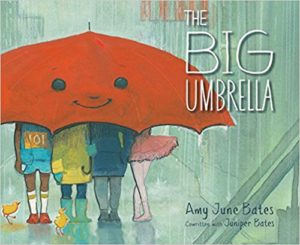


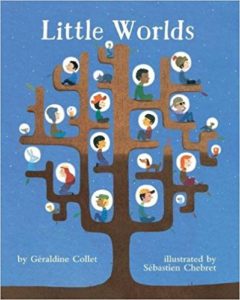







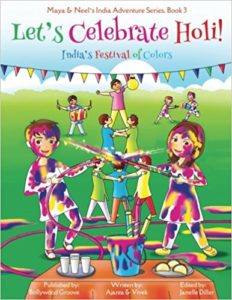
 In this book (the third in the series) Maya and her brother Neel visit relatives in India. Their arrival coincides with the festival of Holi which provides the perfect opportunity for the cousins to explain the holiday. As Maya and Neel learn about their heritage and the various ways the people celebrate throughout the many regions of India, readers will also. They will discover that India is an immense country with many states, each of which observes the holiday in unique ways. The book also includes a pronunciation guide which demonstrates the proper ways to speak the Indian words.
In this book (the third in the series) Maya and her brother Neel visit relatives in India. Their arrival coincides with the festival of Holi which provides the perfect opportunity for the cousins to explain the holiday. As Maya and Neel learn about their heritage and the various ways the people celebrate throughout the many regions of India, readers will also. They will discover that India is an immense country with many states, each of which observes the holiday in unique ways. The book also includes a pronunciation guide which demonstrates the proper ways to speak the Indian words.
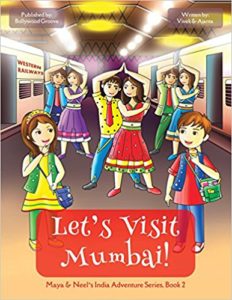
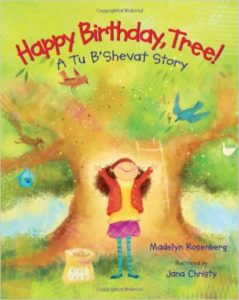 Happy Birthday, Tree: A Tu B’Shevat Story
Happy Birthday, Tree: A Tu B’Shevat Story